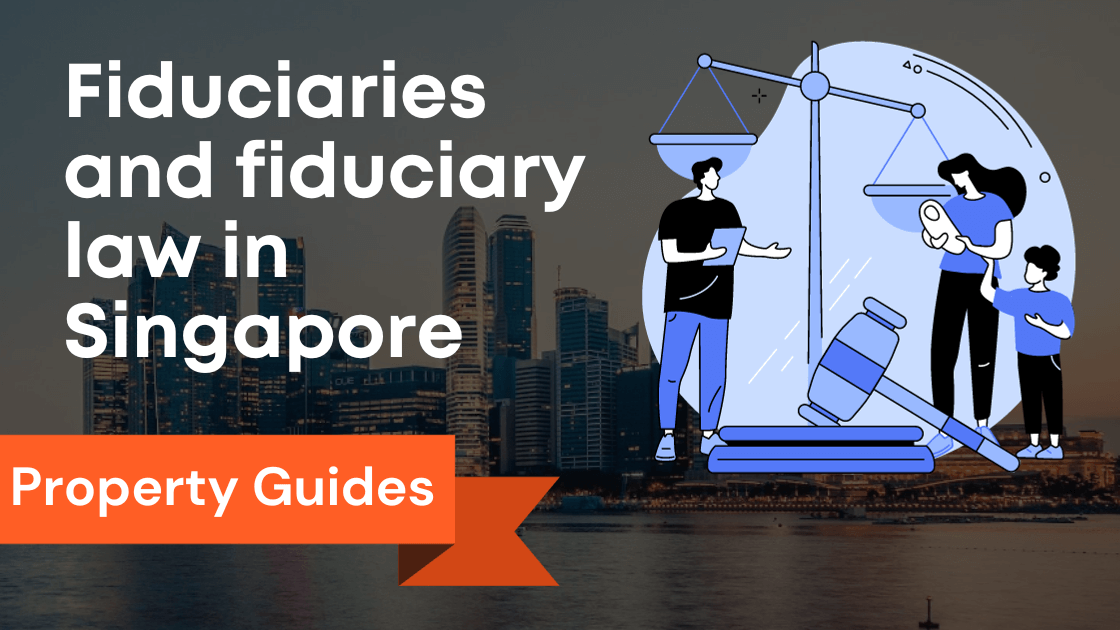Introduction to Fixed and Floating Interest Rates

Fixed and Floating Interest Rates are two options borrowers have when it comes to taking out loans or mortgages.
Fixed rates remain constant throughout the loan term, providing stability and predictability in monthly payments.
On the other hand, floating rates fluctuate with market conditions, which can result in either lower or higher interest rates.
While fixed rates offer security, floating rates can offer the potential for savings if interest rates decrease.
Both options have their advantages and disadvantages, and borrowers should carefully consider their financial situation and future plans before making a decision.
Both options have their own advantages and considerations, so it’s essential to understand what each entails before making a decision.
Overview of Fixed and Floating Interest Rates
A fixed interest rate refers to a rate that remains unchanged for a predetermined period.
It offers stability and predictability since the monthly repayments remain constant throughout the fixed rate period.
This is advantageous when interest rates are anticipated to rise, as borrowers can lock in a lower rate.
On the other hand, a floating interest rate, also known as a variable interest rate, fluctuates with changes in the lending rate.
This rate is usually based on a benchmark rate, such as the Singapore Interbank Offered Rate (SIBOR) or the Singapore Overnight Rate Average (SORA).
Floating rate packages are more flexible and generally start lower than fixed rates initially.
Difference between Fixed and Floating Interest Rates
One key difference between a fixed and floating interest rate is the risk involved.
With a fixed rate, borrowers are protected from potential rate hikes during the fixed period.
This is especially beneficial in a rising interest rate environment.
On the other hand, floating rates expose borrowers to market conditions, which can result in increased monthly repayments if rates go up.
https://www.youtube.com/watch?v=ojlWLF86cCQ
Another important consideration is the lock-in period.
A fixed rate loan typically comes with a lock-in period, during which borrowers may face penalties for early repayment or refinancing.
Floating rate loans, on the other hand, offer more flexibility, allowing borrowers to make partial repayments or switch to a fixed rate without incurring penalties.
Key Features of Fixed and Floating Interest Rates
Both fixed and floating interest rate options have their own unique features.
With a fixed rate, borrowers have the peace of mind that their interest rate will remain the same for the entire term of the loan.
This stability can be beneficial when interest rates are expected to rise.
It also allows borrowers to plan their cash flows better, as they know their monthly instalments will not change.
Floating interest rates, on the other hand, are often tied to a reference rate, providing some protection against rate fluctuations.
This means that borrowers can take advantage of lower interest rates if they occur during the loan tenure.
Additionally, floating rate packages generally have a shorter lock-in period, allowing borrowers to refinance or switch to a fixed rate sooner, without incurring significant costs.
It’s important to note that choosing between fixed and floating interest rates depends on individual circumstances, risk appetite, and market conditions.
Financial institutions in Singapore offer a range of loan packages with different features, so borrowers should carefully consider their options and compare the costs and benefits of each.
Understanding the differences between fixed and floating interest rates is crucial when considering borrowing in Singapore.
While fixed rates provide stability, floating rates offer flexibility.
It’s essential to assess one’s financial goals, risk tolerance, and market conditions to make an informed decision.
Consulting a financial advisor and comparing loan packages can help borrowers make the best choice for their individual needs.
Key Takeaways
- Interest Rate Types: Understand the difference between fixed and floating interest rates for home loans in Singapore.
- Fixed Rate Stability: Fixed rates offer stability with constant monthly repayments, suitable when anticipating rising interest rates.
- Floating Rate Flexibility: Floating rates fluctuate based on market conditions, providing flexibility but exposing borrowers to potential increases.
- Risk Consideration: Fixed rates protect from rate hikes but may have penalties while floating rates are more flexible but involve market risks.
- Lock-In Periods: Fixed rates often come with lock-in periods, limiting flexibility, whereas floating rates offer shorter lock-ins.
- Features of Fixed Rates: Fixed rates ensure a consistent interest rate for the loan term, aiding in better cash flow planning.
- Features of Floating Rates: Floating rates, tied to reference rates, provide protection against rate fluctuations and shorter lock-in periods.
- Choosing Depends On: Selection between fixed and floating rates depends on individual circumstances, risk appetite, and market conditions.
- Consultation is Key: Borrowers should consult financial advisors, compare loan packages, and weigh costs and benefits for an informed decision.
- Assessment Factors: Evaluate factors like loan interest, repayments, tenure, and type of loan to choose the most suitable interest rate type.
Fixed Interest Rates in Singapore

What is a Fixed Interest Rate?
A fixed interest rate refers to an interest rate that remains unchanged for a set period of time.
In Singapore, this type of interest rate is commonly used in home loans.
When borrowers opt for a fixed-rate package, they lock in a fixed interest rate with the lender, keeping the interest rate consistent throughout the agreed-upon period.
It is important to keep in mind that fixed rates are influenced by various factors, including the interest rate environment, central bank policies, and market conditions.
While fixed rates may provide stability and certainty, they can also limit borrowers from benefiting from potential future interest rate decreases.
Some key points about fixed interest rates include:
- Locking in a fixed rate: Borrowers choose a fixed rate to secure a predictable monthly repayment amount, which can be beneficial for budgeting purposes.
- Keep in mind that fixed rates are not fixed forever: Fixed-rate packages usually have a lock-in period, during which the borrower is committed to the fixed rate. After the lock-in period, the rate may be revised based on prevailing market conditions.
- Fixed deposit rates: Lenders often set fixed home loan rates based on the benchmark lending rate and the cost of funds, which are partially influenced by fixed deposit rates.
Benefits and Drawbacks of Fixed Interest Rates
When deciding between fixed and floating interest rates, it is important to consider the benefits and drawbacks of fixed interest rates.
Here are some key points to keep in mind:
- Interest rate stability: With a fixed interest rate, borrowers can enjoy stability as the rate remains unchanged throughout the agreed-upon fixed rate period. This means having predictable monthly mortgage installments, which can be beneficial for budgeting purposes.
- Protection against interest rate increases: If there is an expectation of rising interest rates in the future, choosing a fixed-rate package can protect borrowers from the impact of these increases.
- Potential opportunity cost: While fixed rates provide stability, they may not offer the opportunity to benefit from potential decreases in interest rates. If interest rates drop significantly during the fixed rate period, borrowers with fixed-rate packages may miss out on potential savings.
- Limited flexibility: Fixed-rate packages often come with a lock-in period, during which borrowers are committed to the fixed rate. This can limit the borrower’s ability to refinance or switch to a more favorable rate package during that period.
- Volatile market conditions: In a volatile market with uncertain interest rate movements, some borrowers may prefer the stability and peace of mind that a fixed-rate package provides.
It is important to carefully evaluate your financial situation, market conditions, and personal preferences before deciding whether to choose a fixed or floating interest rate.
Each option has its own set of benefits and drawbacks, and what suits one borrower may not necessarily be the best choice for another.
Therefore, it is advisable to consult with a financial advisor or mortgage specialist to make an informed decision that aligns with your financial goals and circumstances.
Floating Interest Rates in Singapore

What is a Floating Interest Rate?
In Singapore, a floating interest rate, also known as a variable interest rate, is a type of interest rate that can fluctuate over time.
This type of interest rate is commonly associated with home loans, where the interest rate can change periodically based on certain factors.
When you choose a floating interest rate for your home loan, the interest rate remains at a certain level for a set period of time, typically between one and three years.
After this initial period, the interest rate will be revised periodically, usually every three months or every year, based on market interest rates.
The interest rate payable on a floating rate home loan is usually pegged to a reference interest rate, such as the Singapore Interbank Offered Rate (SIBOR) or the Singapore Swap Offer Rate (SOR), plus a fixed spread.
The reference interest rate is determined by market factors, such as the monetary policy set by the central bank and the demand for credit in the market.
Advantages and Disadvantages of Floating Interest Rates
There are both advantages and disadvantages to choosing a floating interest rate for your home loan in Singapore.
One of the advantages is that floating interest rates tend to be lower than fixed interest rates in an environment of low-interest rates.
This means that borrowers can enjoy lower monthly repayments during the initial fixed period of their loan.
Another advantage is that floating interest rates offer flexibility.
Unlike fixed interest rates, which are locked in for a specific period, floating rates can decrease or increase depending on market conditions.
This can be beneficial if interest rates are expected to decrease in the future.
However, it’s important to note that floating interest rates can also rise.
If the reference interest rate increases, the interest rate payable on a floating rate loan will also rise, potentially increasing the monthly repayment amount.
Borrowers with low-risk appetites or those who prefer certainty in their mortgage repayments may prefer a fixed interest rate.
When choosing between a floating or fixed interest rate, it’s crucial to carefully consider your financial situation, loan tenure, income stability, and risk tolerance.
You should also review the conditions of the mortgage package and understand how the interest rate is determined, including the board rates, market interest rates, and any discounts or promotions offered.
In conclusion, floating interest rates in Singapore offer flexibility and the potential for lower monthly repayments during periods of low interest rates.
However, they also come with the risk of rising interest rates in the long run.
It’s important to assess your financial circumstances and risk appetite before deciding whether to choose a floating or fixed interest rate for your home loan.
Choosing Between Fixed and Floating Interest Rates

When it comes to home loans in Singapore, one of the decisions that borrowers need to make is whether to choose a fixed interest rate or a floating interest rate.
Both options have their pros and cons, and the decision depends on various factors such as loan interest, loan repayments, loan tenure, and the current state of the property market.
Factors to Consider when Choosing a Home Loan Package
Loan Interest: One of the crucial factors to consider is the interest rate on the loan.
Fixed interest rates remain the same throughout the loan tenure, providing borrowers with stability and predictable monthly repayments.
On the other hand, floating interest rates are typically lower initially, but they can fluctuate with market conditions, potentially increasing the monthly mortgage payments.
Loan Repayments: Borrowers need to assess their financial circumstances and determine whether they prefer a consistent monthly repayment amount (fixed interest rate) or are comfortable with potential changes and fluctuations (floating interest rate).
Loan Tenure: The length of the loan tenure also plays a role in the decision.
Shorter loan tenures may favor fixed interest rates, as borrowers can lock in a low rate for a shorter period.
However, if the loan tenure is longer, the flexibility of a floating interest rate may be advantageous, as it allows borrowers to take advantage of potential interest rate decreases.
Type of Loan: Different loan packages offer different benefits.
Some packages may have fixed interest rates for the initial years, followed by a switch to floating rates.
Borrowers should carefully evaluate the terms and conditions of the loan packages and consider how these align with their financial goals and preferences.
Rates Typically Fluctuate: It’s important to understand that floating interest rates can change throughout the life of the loan.
This means that borrowers need to be prepared for potential increases in their monthly repayments.
However, if interest rates fall, borrowers with floating rates could benefit from lower repayments.
Comparison of Fixed and Floating Interest Rates
Interest Rate Stability: One of the main advantages of choosing a fixed interest rate is stability.
With a fixed rate home loan, the interest rate is fixed for a specific period, usually ranging from one to five years.
This provides borrowers with predictable monthly mortgage repayments.
However, borrowers should keep in mind that fixed interest rates are typically higher than floating rates.
Flexibility in Interest Rates: On the other hand, floating interest rates allow borrowers to take advantage of potential decreases in interest rates.
Floating rate home loans are usually pegged to the Singapore Interbank Offered Rate (SIBOR) or the Singapore Overnight Rate Average (SORA), which are influenced by market conditions.
If interest rates decrease, borrowers with floating rates can enjoy lower monthly mortgage repayments.
Loan Pegging: Borrowers considering a floating interest rate should also understand how their loan will be pegged.
Some floating rate home loan packages offer different ways to peg the interest rate, such as a fixed spread or a variable spread.
Understanding the pegging method and assessing its impact on the overall loan repayments is crucial.
Penalty Fees and Subsidies: Borrowers should also consider any penalty fees associated with early repayment or switching between fixed and floating rates.
Additionally, some loan packages may offer subsidies, such as legal fee subsidies or administrative cost subsidies, which can help offset the cost of the loan.
Cost of Funds: Financial institutions determine their interest rates based on the cost of funds.
The cost of funds can vary and may impact the interest rates offered to borrowers.
It’s essential to compare different lenders and their interest rate packages to find the most competitive option.
In conclusion, choosing between fixed and floating interest rates for a home loan in Singapore requires careful consideration of factors such as loan interest, loan repayments, loan tenure, and personal financial goals.
Both options have their advantages and disadvantages, and borrowers should assess their financial circumstances and future plans before making a decision.
Consulting with a financial advisor or mortgage specialist can also provide valuable insights and guidance in choosing the most suitable option for individual needs.
Fixed vs Floating Interest | fixed or floating | fixed versus floating | floating or fixed
When considering a mortgage, one of the most important factors to consider is the mortgage rate.
This rate determines how much you will pay in interest over the life of your loan.
There are two main types of mortgage rates: fixed-rate and adjustable-rate.
A fixed-rate mortgage loan gives you a set interest rate for the entire duration of your loan.
This means that regardless of any fluctuations in the market, your interest rate remains the same.
On the other hand, an adjustable-rate mortgage loan provides a rate that can change over time based on the current market conditions.
While a fixed-rate mortgage loan gives you the security of a consistent monthly payment, an adjustable-rate loan may offer a lower initial rate and the potential to take advantage of lower interest rates in the future.
However, it’s important to note that interest rates have peaked in recent years.
Given that interest rates are projected to rise in the near future, it may be wise to consider a fixed-rate mortgage loan.
By locking in a rate now, you can protect yourself against rising interest rates and ensure that your monthly mortgage payments remain steady.
While an adjustable-rate loan may initially seem appealing due to its lower rate, it’s crucial to carefully consider your long-term financial goals and the potential risks associated with fluctuating interest rates.
Always consult with a mortgage professional to determine the best mortgage rate option for your unique circumstances and financial situation.
https://www.youtube.com/watch?v=2DZ7IdT2BU8
A buffer in the case of interest rates refers to the precautionary measures taken by individuals or organizations to mitigate the potential impact of interest rate changes on their financial situations.
Interest rates play a crucial role in determining the cost of borrowing and the return on investments.
Fluctuations in interest rates can have a significant impact on financial planning, especially for those with variable-rate loans or investments.
By creating a buffer, individuals and organizations allocate additional funds to absorb any potential interest rate changes.
This buffer can serve as a protective layer against the adverse effects of interest rate increases, ensuring that the financial stability of the entity remains intact.
It provides a cushion that allows individuals and organizations to have a certain level of flexibility and adaptability when faced with changing interest rates.
Moreover, having a buffer can also provide a sense of security and peace of mind, knowing that there are resources available to mitigate any negative effects that may arise from interest rate fluctuations.
It enables individuals and organizations to navigate through the periods of uncertainty and safeguard their financial well-being.
Creating a buffer in case of interest rates is a prudent financial strategy that can prove to be beneficial in the long run.
It allows individuals and organizations to be better prepared, ensuring that they can continue to meet their financial obligations and pursue their financial goals, even in times of economic volatility.
By proactively taking steps to create a buffer, individuals and organizations can reduce the potential financial risks associated with fluctuating interest rates and maintain financial stability.
Home Loan Package | Fixed Home Loan
When interest rates rise, whether it is in the short or long run, it has a significant impact on various aspects of the economy.
A low interest rate environment, which we have been experiencing for quite some time now, has its own set of consequences.
Many individuals and businesses have taken advantage of these low rates by borrowing money at favorable terms.
However, as interest rates start to climb, it is important to understand the implications.
Firstly, the total interest paid on loans will increase.
This is particularly concerning for those with large mortgages or sizable debts.
Homeowners, for example, may find themselves paying more interest on their monthly mortgage payments.
Additionally, businesses that rely heavily on borrowing to finance operations or expand may face higher costs in the form of elevated interest payments.
Another aspect to consider is the impact on investment decisions.
As interest rates rise, potential returns from risk-free investments, such as government bonds, become more attractive.
This may cause some investors to shift their funds away from riskier investments, such as stocks, which can have broader implications on the stock market and overall economic growth.
Moreover, changing interest rates can also affect consumer behavior.
When interest rates are low, individuals are more willing to take on debt and make larger purchases.
However, as rates rise, the cost of borrowing increases, potentially discouraging consumers from making big-ticket purchases.
It is essential to closely monitor interest rate changes and their implications as they can have far-reaching effects on various aspects of the economy.
Conclusion
When it comes to choosing between fixed and floating interest rates in Singapore, there are several important factors to consider.
Understanding the pros and cons of each option can help you make an informed decision that aligns with your financial goals and risk tolerance.
If you prefer stability and predictability in your monthly mortgage payments, a fixed rate package may be the right choice for you.
With a fixed rate, your interest rate will remain the same throughout the entire tenure of the loan.
This can provide peace of mind, especially during periods of increasing interest rates.
However, it’s important to note that fixed home loan interest rates in Singapore tend to be higher compared to floating rates.
On the other hand, if you’re comfortable with some level of uncertainty and are willing to take on potential interest rate fluctuations, you may opt for a floating rate.
With a floating rate mortgage, your interest rate will vary based on market conditions.
This can work in your favor if interest rates decrease, as you’ll benefit from lower monthly payments.
However, it’s important to be prepared for the possibility of higher interest rates in the future.
Another factor to consider is the type of rate of interest offered by lenders.
Some lenders offer fixed deposit based rates, which are tied to the bank’s fixed deposit rates.
These rates may change over time, so it’s important to carefully review the terms and conditions.
Ultimately, the decision between fixed and floating interest rates in Singapore depends on your individual circumstances and preferences.
It’s advisable to consult with a financial expert or mortgage advisor who can provide personalized advice based on your specific needs.
In conclusion, choosing between fixed and floating interest rates in Singapore requires careful consideration of various factors.
By weighing the stability of fixed rates against the potential savings of floating rates, you can make a decision that best suits your financial situation.
So, take your time to evaluate your options and choose the home loan interest rate that aligns with your long-term goals.
Frequently Asked Questions
What is the difference between fixed and floating interest rates?
Fixed interest rates remain unchanged for a specific period, while floating interest rates fluctuate based on market conditions.
How does a fixed rate home loan work?
A fixed rate home loan offers a stable interest rate for a predetermined period, providing borrowers with certainty regarding their repayment amount.
What are the advantages of a fixed rate home loan?
The advantages of a fixed rate home loan include predictable monthly payments and protection against interest rate rises.
What is a floating rate home loan?
A floating rate home loan, also known as a variable rate home loan, has an interest rate that can change over the loan term, depending on market conditions.
What are the benefits of a floating rate home loan?
A floating rate home loan offers the potential for lower interest rates if market conditions are favorable, flexibility in repayments, and the ability to enjoy any potential falls in interest rates.
How does the choice between fixed and floating interest rates affect my loan interest rate vs?
Choosing a fixed interest rate provides stability and predictability, while a floating interest rate allows for potential savings or increased costs depending on market movements.
What factors should I consider when deciding between a fixed and floating interest rate loan?
Factors to consider include the current interest rate trends, the borrower’s risk profile, the loan amount, and the expected duration of the loan.
Are there any risks associated with floating home loans?
Yes, the risk of rate rises is a concern with floating home loans. If interest rates increase significantly, borrowers may experience higher monthly repayments.
Can I switch from a fixed rate to a floating rate or vice versa?
Yes, it is possible to switch between fixed and floating interest rates, but it may be subject to terms and conditions set by the lender.
Should I choose a floating interest rate or a fixed interest rate for my home loan?
The choice between a floating or fixed interest rate depends on your financial goals, risk tolerance, and market conditions. It is advisable to consult with a financial advisor or mortgage broker to determine the best option for your specific situation.












